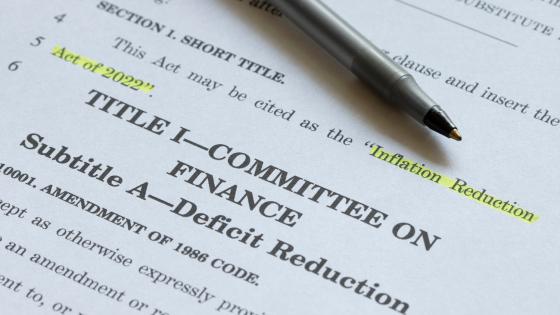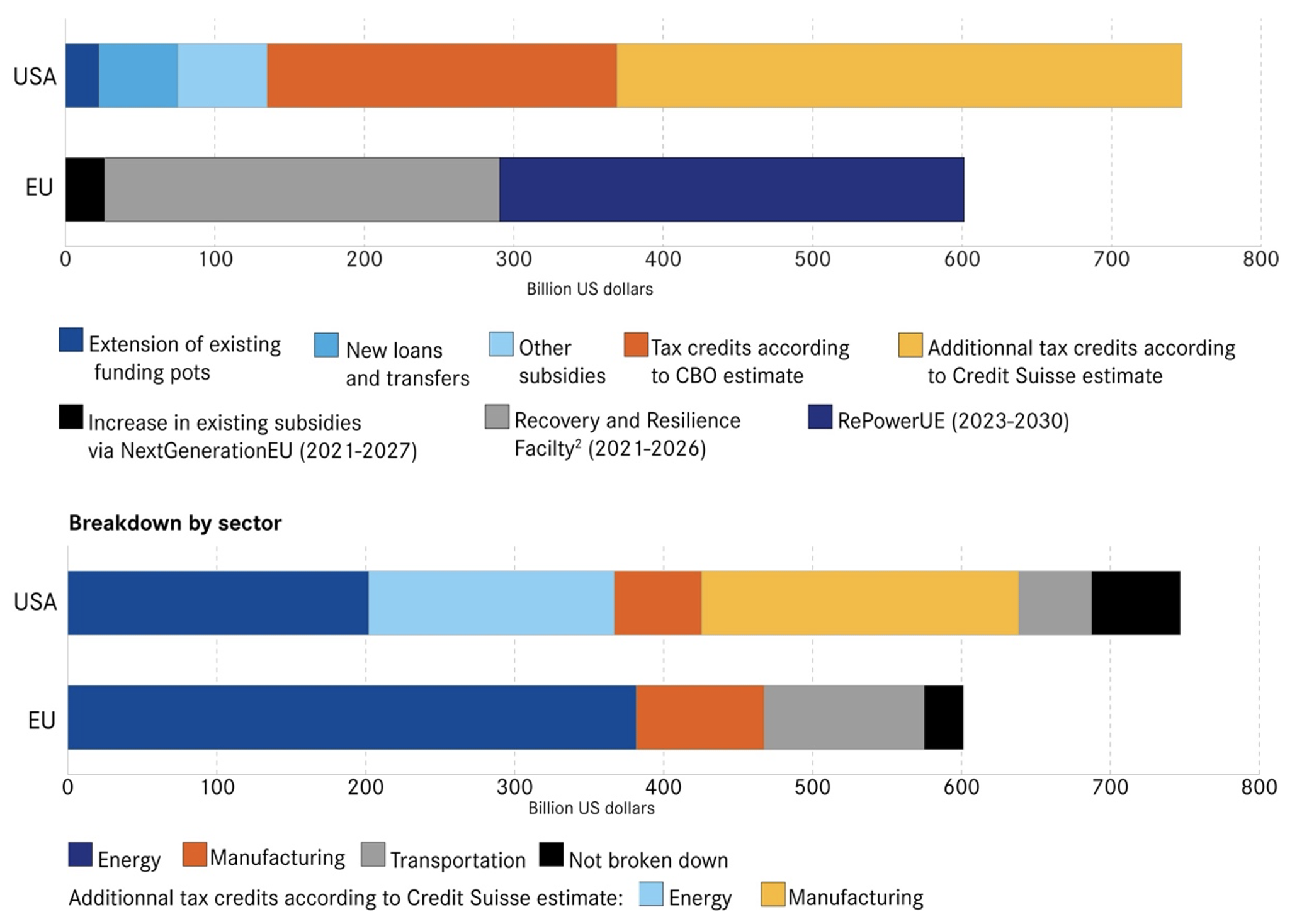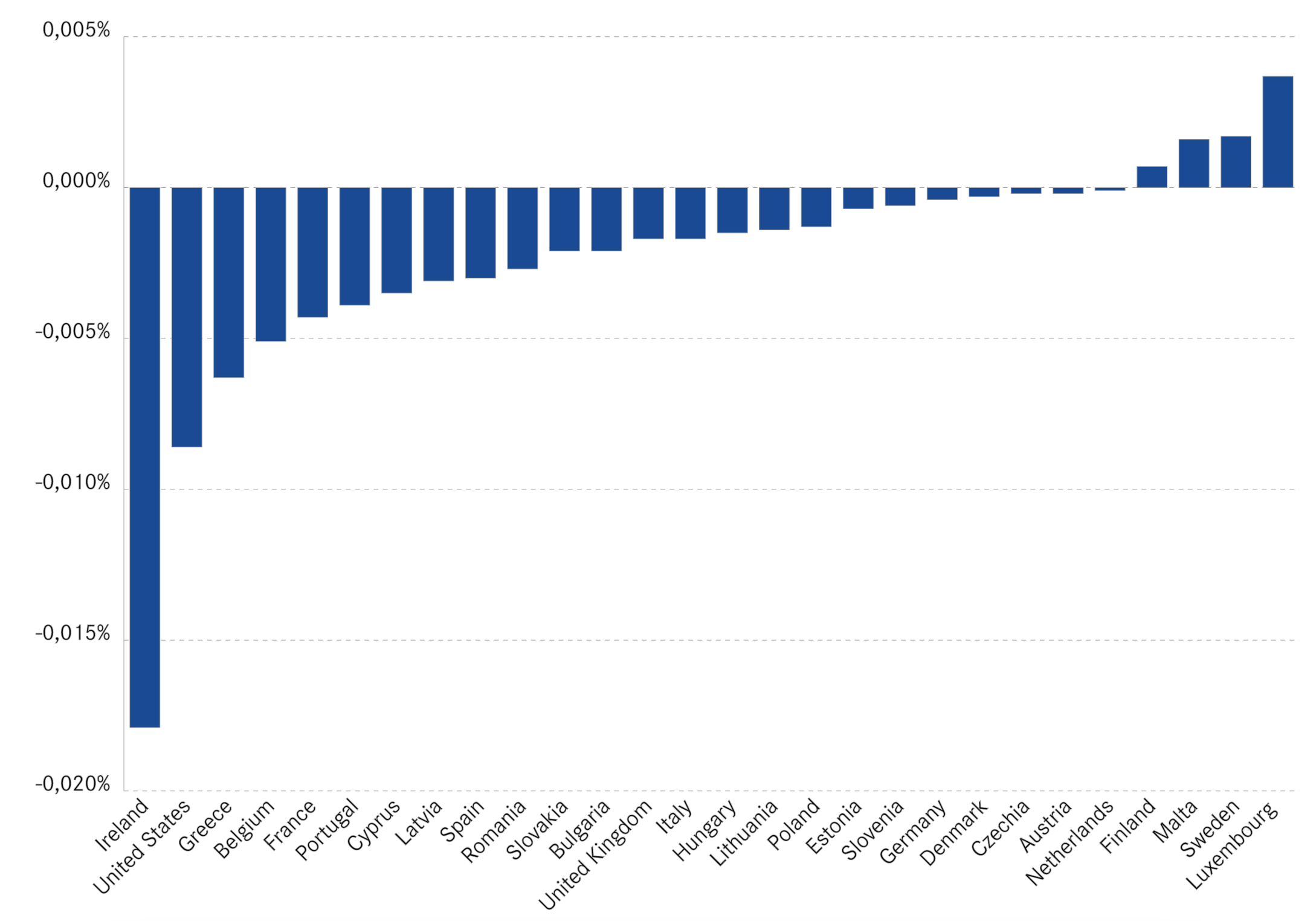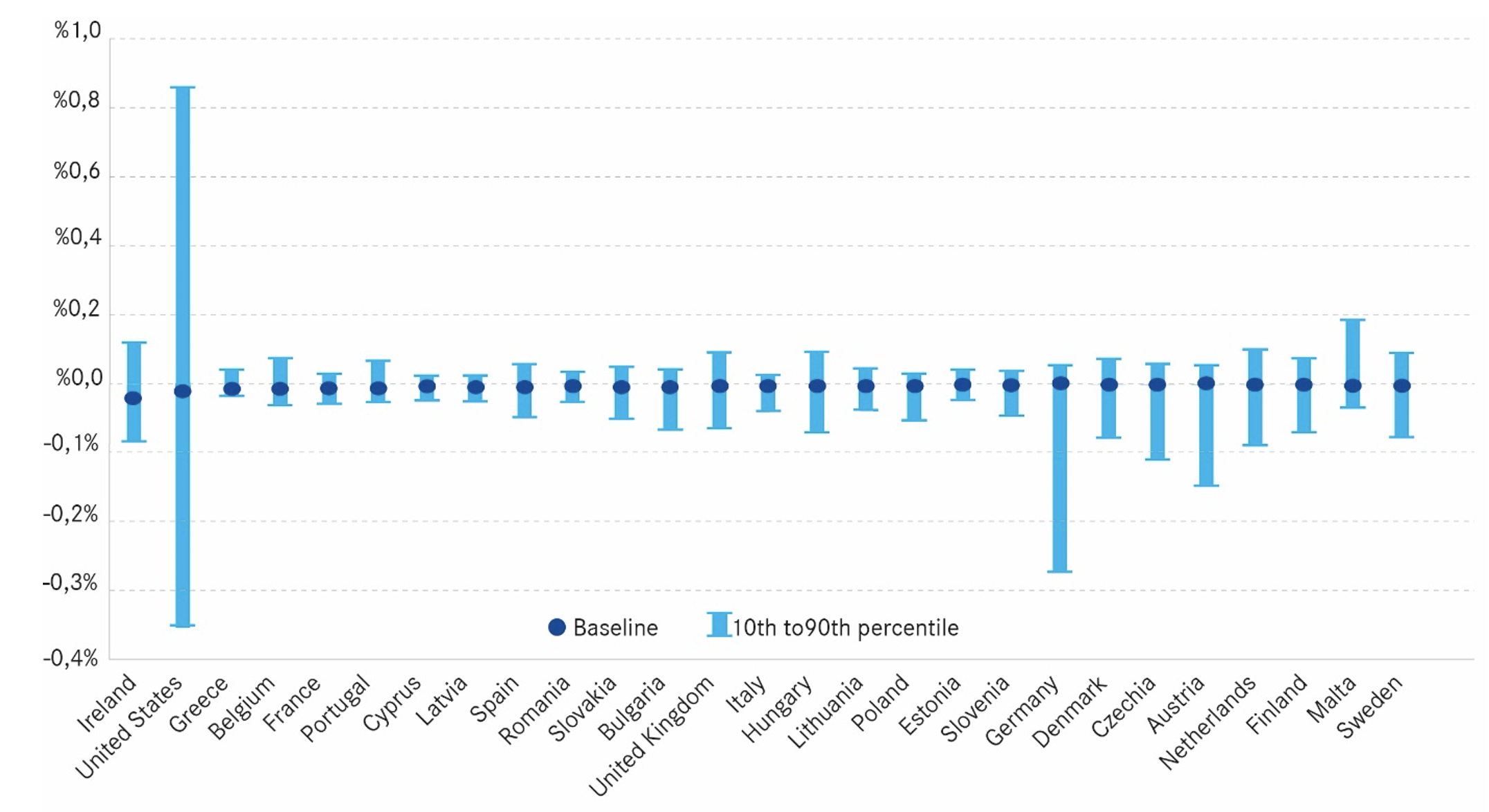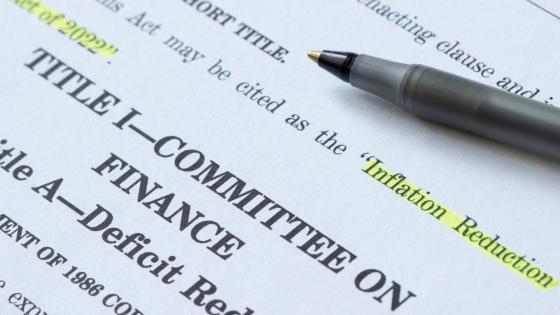The US Inflation Reduction Act (IRA), aimed at promoting the production and adoption of clean energy, came into effect at the beginning of 2023. The ‘buy American’ conditions enshrined in some of the IRA’s subsidies have drawn substantial criticism from the EU. The IRA itself has stirred a strong debate about the future of European industrial policy (Eisl 2022, Jenkins et al. 2022, Attinasi et al. 2023a, Bistline et al. 2023, Bouët 2023, Bown 2023, Kleimann et al. 2023, Jansen et al. 2023).
Is Europe doing enough to support its industry to adapt to the green transition? Is the European strategy the right one, with its focus on carbon-pricing, or should the EU copy the IRA blueprint, with large, blanket subsidies close to the market in specific sectors and strong local content requirements? Is EU at risk from the IRA and should it react aggressively?
In a joint statement, we – members and staff from the German Sachverständigenrat zur Begutachtung der gesamtwirtschaftlichen Entwicklung and from the French Conseil d’Analyse Economique – contribute to this debate. Our analysis quantifies the macroeconomic effects of the IRA and discusses how Europe can manage its green transition while strengthening its economic and strategic resilience, preserving jobs and productivity growth, and maintaining European solidarity and international coordination.
Figure 1 Estimates of the costs of the IRA’s “Energy & Climate” section
Notes: These estimates relate to the provisions of the “Energy and Climate” section of the IRA. There are some minor variations in the total duration covered by these estimates (till 2029 to 2031). b This is the central scenario of Brookings.
Source: Brookings, Committee for a responsible Federal Budget, Congressional Budget Office (CBO), Crédit Suisse, Goldman Sachs, McKinsey & Company, Tax Foundation (2023), University of Pennsylvania (Penn). Calculations by the Franco-German Council of Economic Experts.
Minimal overall macroeconomic impact of the IRA
Our first observation is that the importance of the IRA needs to be put into perspective. The total financial volume of the IRA, estimated in a broad range from $390 billion to $900 billion for the period 2023-2031, is comparable to the overall financial volume of the various programmes already launched by the EU to achieve climate objectives and facilitate the green transition.
Figure 2 Comparison of production and environmental subsidies in the US and the EU
Source: German Council of Economic Experts (2023).
As the IRA’s subsidies have to be financed by current or future taxes, we expect a minimal overall macroeconomic impact of the IRA on both the US and the EU. The negligible effects on aggregate US output found in the US-REGEN model (Bistline et al. 2023) suggest prima facie that the macroeconomic consequences of the IRA for European countries should be extremely limited. We validate this prediction by exploring the economic implications of the IRA in a multi-country, multi-sector model with detailed input-output linkages (Baqaee and Farhi 2019). The model allows for rich substitution patterns (across sectors, across countries and across factors), which can capture a wide set of reallocation effects along the supply chain in response to policy shocks such as tariffs or subsidies.
Results from calibrations confirm that the anticipated macroeconomic effects of the IRA for European countries are minuscule at a 5- to 10-year horizon: real national income would be unaffected in Germany, and would decline by 0.004% in France and by 0.001% for the EU as a whole.
In a recent column, Attinasi et al. (2023b), using the same model, obtain estimates of the effect of IRA that are significantly larger. The main point of departure in their simulations is that they assume that IRA subsidies work as a pure trade shock, akin to a net productivity gain. In contrast, we account for the fact that these subsidies need to be paid for. They also assume IRA credits to originate TFP improvements in some industries, an assumption we are reluctant to make by lack of a solid enough ground to do so.
Figure 3 Estimated effect of the IRA on real national income in a multi-country multi-sector model
Source: French and German Council of Economic Experts.
Figure 4 Effect of the IRA on real income: Tax wedge-sector heterogenity
Notes: Estimated effect of the IRA on real national income by country and multi-sector model (Baqaee and Farhi 2019). 10th-90th percentile band of sectoral effects. Sector weighted by their share in total national income.
Source: French and German Council of Economic Experts calculations.
While the macroeconomic effects of the IRA are likely to be small for the US, and for European countries in return, this does not preclude that the effects for specific sub-sectors could be significant, which is why we have conducted a more in-depth examination at a sectoral level.
Among the sectors that are expected to be specifically impacted by the IRA, the production of electric vehicles (EVs) is one that has attracted considerable attention, due to the large subsidies for buying EVs coupled with the local content requirement included in the IRA. One should recall first that Europe is ahead of the US in the EV sector: in 2022, production in Europe was still roughly three times higher than in the US (International Council on Clean Transportation 2023). Second, we do not expect the expansion of the US market for electric vehicles to lure substantial demand or production away from Europe. For example, for 2030, both the expected share of EVs in all new cars in Europe was revised upward from 40% to nearly 60% and the projected global sales of EVs were also revised upward from 30 million to 40 million (IEA 2022a, 2023). Europe would continue to be a larger sales market than the US in 2030, with 10.5 million electric vehicles sold in Europe versus 8.2 million in the US (IEA 2023). Third, Europe also imposes tariffs on electric vehicles that are much higher than in the US (10% versus 2.5%), which would correspond to a subsidy for European vehicles of around $3,750 for an average price of around $50,000 (Bown 2023). Finally the fact that electric vehicles are costly to transport mitigates the competitive advantage granted by the IRA.
Another industry that receives substantial subsidies is the production of low-carbon hydrogen. For example, the IRA’s production subsidies are estimated to immediately reduce the cost of producing green hydrogen in the US from over $4 to between $0.9 and $1.2 per kg compared to roughly €4 in Europe (NWR 2022). This cost advantage puts the price of green hydrogen on a par with the price of conventional fossil hydrogen. It is also slightly higher than the estimated transport of $2.1 to $2.7 per kg from the US to Europe.
Nonetheless, currently high transport costs and demand for green hydrogen in the US make it rather unlikely that large amounts of subsidised green hydrogen from the US will be imported to Europe in the next years.
Overall, this closer examination at the sectoral level fails to yield evidence linking the IRA to significant risks for the EU.
Avoid a subsidy race – revise the subsidy system
The green transition will require significant and growing public financial support in specific industries in the next decade. But a sheeplike subsidy race should be avoided with the US as well as within the EU. In line with a recent Vox column (Fadinger et al. 2023), we stress the importance of coordinated EU-wide policies. Europe’s industrial policy response should not be dictated by the IRA, but rather based on Europe’s own economic, social, and strategic needs and on its global commitment to decarbonization.
The IRA’s strategy, which essentially consists of subsidies for production and investment, seems to be less effective in meeting the challenges of decarbonisation than that adopted by the EU, which includes both carbon pricing and targeted industrial interventions. Nonetheless, Europe should learn from the simplicity and swiftness of the IRA approach by making it a priority to simplify and expedite European procedures for granting aid. Aid should be concentrated on sectors that generate substantial environmental and technological externalities and in which EU countries already have (or could develop) comparative advantages relative to their partners and competitors.
Expand energy supply to reduce energy price differentials
Rather than the IRA itself, it is the existing and sizable energy price differentials between the EU and the US (Bialek et al. 2023) that are likely to have substantial macroeconomic effects by negatively affecting Europe's attractiveness for investments and the competitiveness of its industries. This is why concerted efforts to reduce energy prices in Europe are essential. It is also important to accelerate the deployment of renewable energy sources in order to strengthen energy supply. In the field of conventional energy production, Germany and France have adopted different strategies, and we are calling for mutual support, in particular by designating nuclear power plants and (hydrogen-ready) gas power plants as transition technologies on the road to climate neutrality in the EU taxonomy. Both countries would benefit from jointly procuring part of the large quantities of clean hydrogen needed from suppliers worldwide. Together, they should be better able to diversify imports of hydrogen and derivatives and thus reduce Europe's dependencies (GCEE 2022: paras. 288 and 518, Bauer et al. 2023). In addition, both countries stand to gain from intensifying their collaboration to develop Europe's electricity and hydrogen infrastructure. The reform of the European electricity markets should also be a central element of any European green industrial policy, with the wholesale market being the main coordination instrument for guaranteeing secure, decarbonised and affordable electricity on a European scale.
Secure raw material supplies, strengthen trade agreements and international cooperation
Finally, we recommend securing the supply of raw materials by strengthening international cooperation through trade agreements and by giving priority to incentives to develop national production and processing capacities. While a complaint to the WTO could be a clear signal that the EU supports multilateralism, it would likely trigger retaliatory measures, with little chance of success. It would be more efficient to cooperate with the US on rules about subsidies linked to environmental protection, ideally with the goal of deepening trade cooperation and establishing a framework that might be shared with a number of partners.
References
Attinasi, M G, L Boeckelmann and B Meunier (2023a), "The Economic Costs of Supply Chain Decoupling", ECB Working Paper No. 2023/2839.
Attinasi, M G, L Boeckelmann and B Meunier (2023b), “Unfriendly friends: Trade and relocation effects of the US Inflation Reduction Act”, VoxEU.org, 3 July.
Baqaee, D R and E Farhi (2019a), “The Macroeconomic Impact of Microeconomic Shocks: Beyond Hulten’s Theorem”, Econometrica 87(4): 1155–1203.
Bauer, F et al. (2023), “The market ramp-up of renewable hydrogen and its derivatives – the role of H2Global”, FAU, eex, OTH und H2Global Policy Paper, Friedrich-Alexander-Universität Erlangen-Nürnberg, European Energy Exchange AG, Ostbayerische Technische Hochschule und H2Global.
Bialek, S, C Schaffranka and M Schnitzer (2023), “The energy crisis and the German manufacturing sector: Structural change but no broad deindustrialisation to be expected”, VoxEU.org, 17 January.
Bistline, J, N Mehrotra and C Wolfram (2023), “Economic Implications of the Climate Provisions of the Inflation Reduction Act”, Brookings Papers on Economic Activity.
Bouët, A (2023), “Inflation Reduction Act–Comment l’Union européenne”, CEPII Policy Brief.
Bown, C P (2023), “Industrial policy for electric vehicle supply chains and the US-EU fight over the Inflation Reduction Act”, Peterson Institute for International Economics Working Paper 23-1.
Bureau, D, J-M Glachant and K Schubert (2023), “Le triple défi de la réforme du marché européen de l’électricité”, Note du CAE, n°76.
Eisl, J (2022), “EU Industrial Policy in the Making”, Economy & Finance Policy Paper no. 286, Notre Europe Jacques Delors Institute
Fadinger, H, P Herkenhoff and J Schymik (2023), “Lessons from the Germany shock: Consequences of uncoordinated economic policies in a currency union”, VoxEU.org, 10 September.
Franco-German Council of Economic Experts (2023), “The Inflation Reduction Act: How should the EU react?”, Joint statement, September.
German Council of Economic Experts (2022), “Managing the Energy Crisis in Solidarity and Shaping the New Reality”, Annual Report 2022/23.
German Council of Economic Experts (2023), “The Inflation Reduction Act: Is the new U.S. industrial policy a threat for Europe?”, Policy Brief 1/2023.
International Council on Clean Transportation (2022), “Power play: Unlocking the potential for US automotive trade with electric vehicles”, Briefing.
International Council on Clean Transportation (2023): “Annual update on the global transition to electric vehicles: 2022”, Briefing, ICCT.
IEA (2022a), World Energy Outlook 2022.
IEA (2022b), Global Hydrogen Review 2022.
IEA (2023), Global EV Outlook 2023.
Jansen, J, P Jäger and N Redeker (2023), “For climate, profits, or resilience? Why, where and how the EU should respond to the Inflation Reduction Act”, Policy Brief, Herthie School, Jacques Delors Center.
Jenkins, JD, E N Mayfield, J Farbes, R Jones, N Patankar, Q Xu and G Schivley (2022), “Preliminary Report: The Climate and Energy Impacts of the Inflation Reduction Act of 2022”, REPEAT Project, Princeton.
Kleimann, D, N Poitiers, A Sapir, S Tagliapietra, N Véron, R Veugelers and J Zettelmeyer (2023), “How Europe should answer the US Inflation Reduction Act”, Bruegel.
NWR – Nationaler Wasserstoffrat (2022), Einschätzung zum Inflation Reduction Act, Stellungnahme, Nationaler Wasserstoffrat, Berlin.
